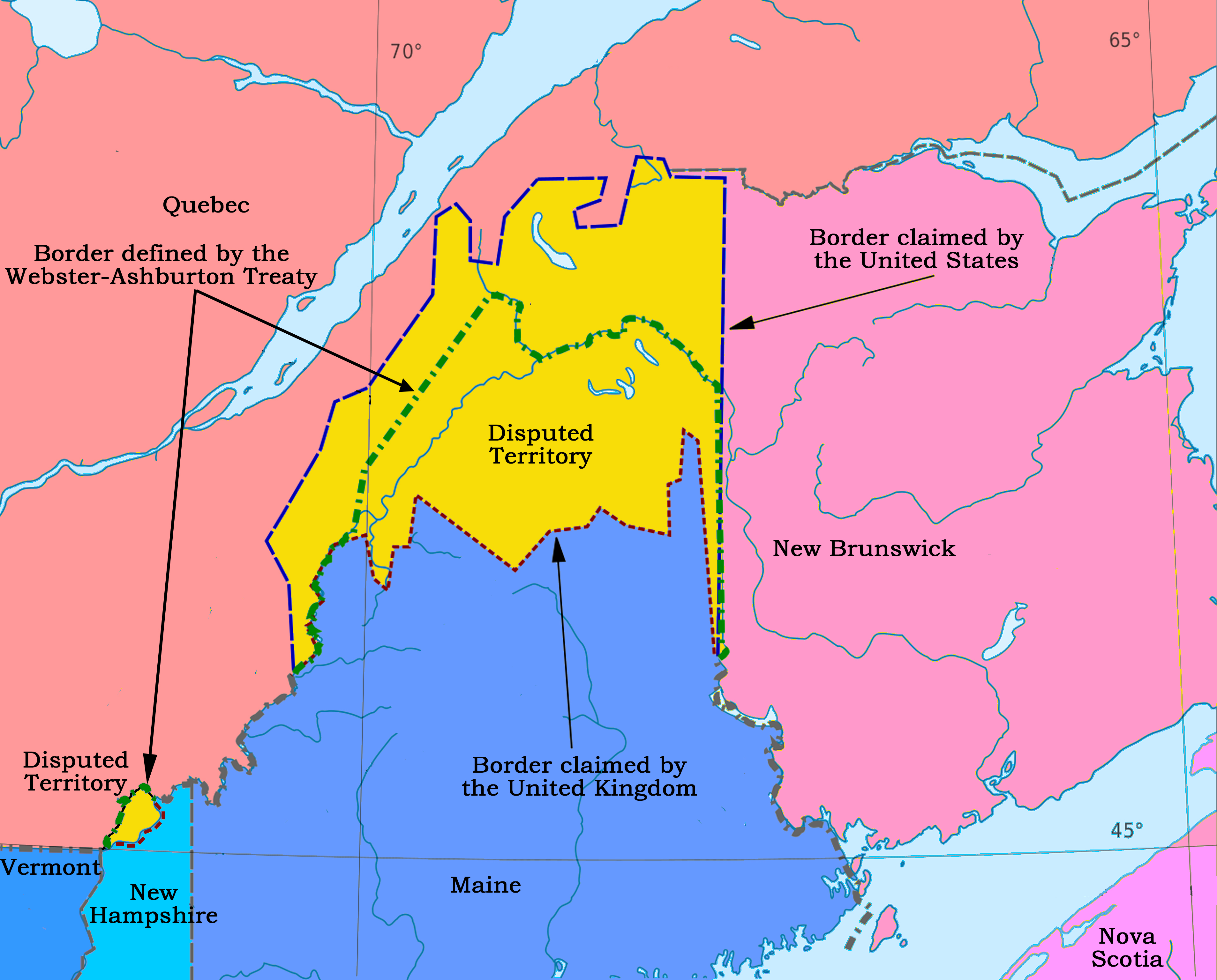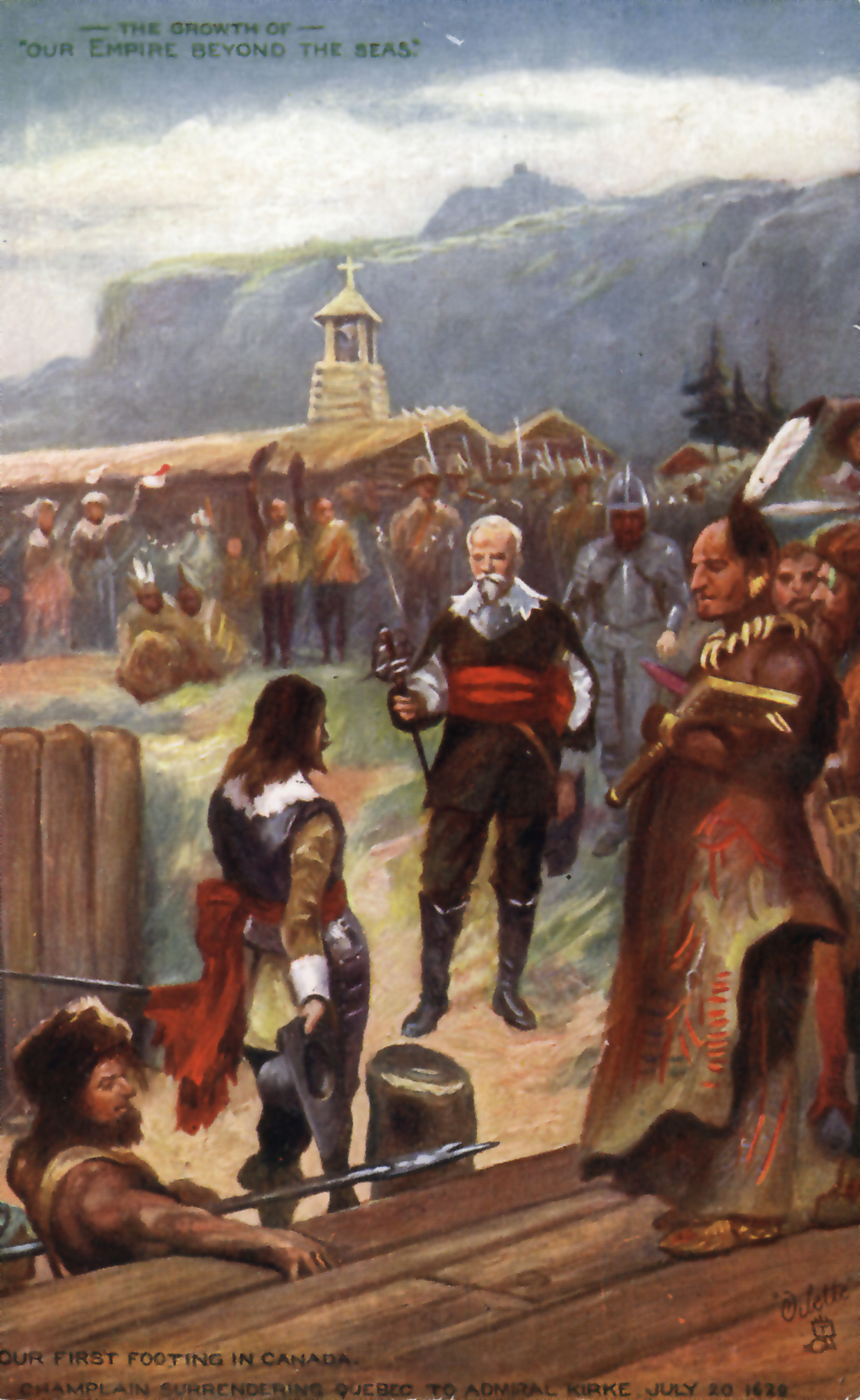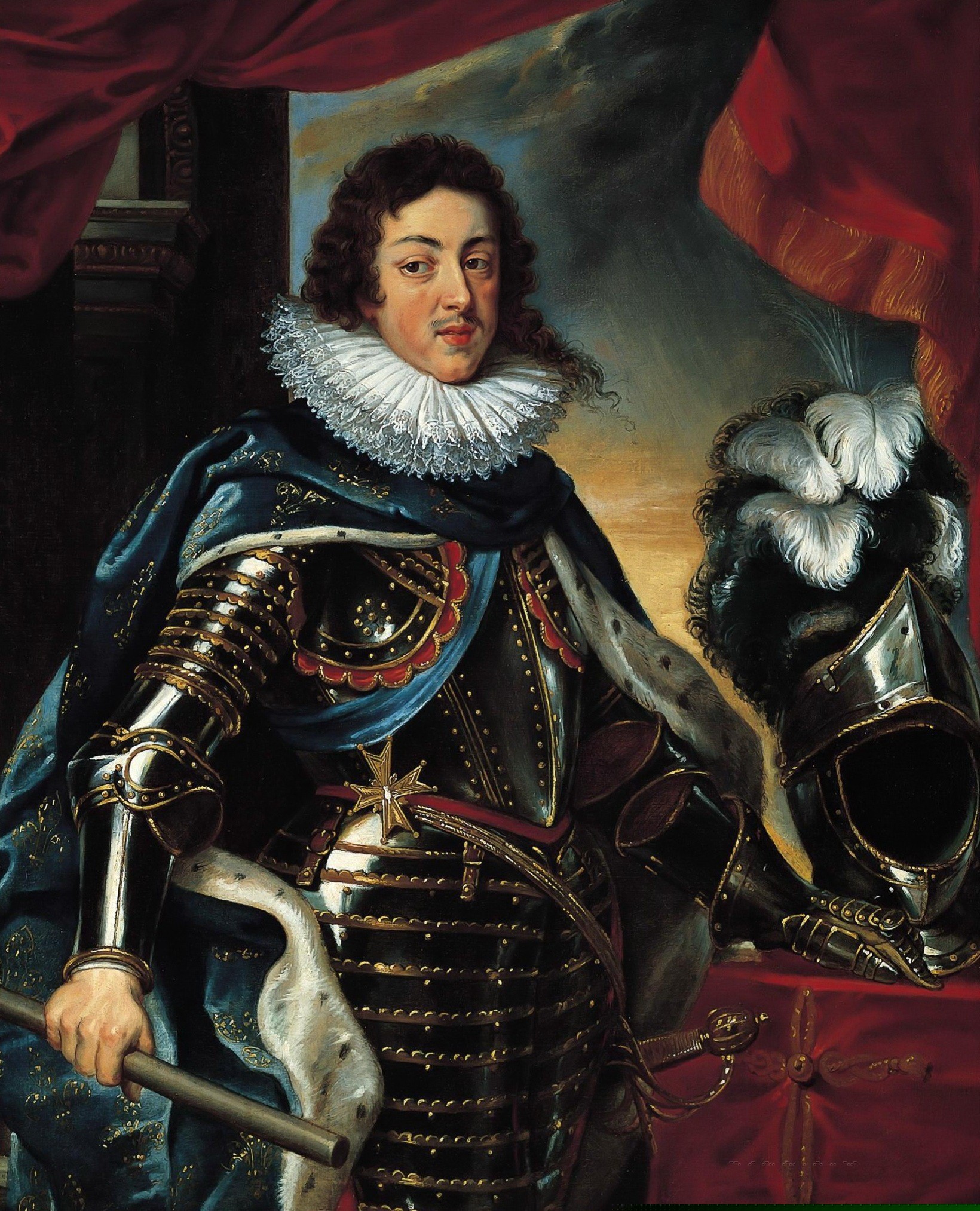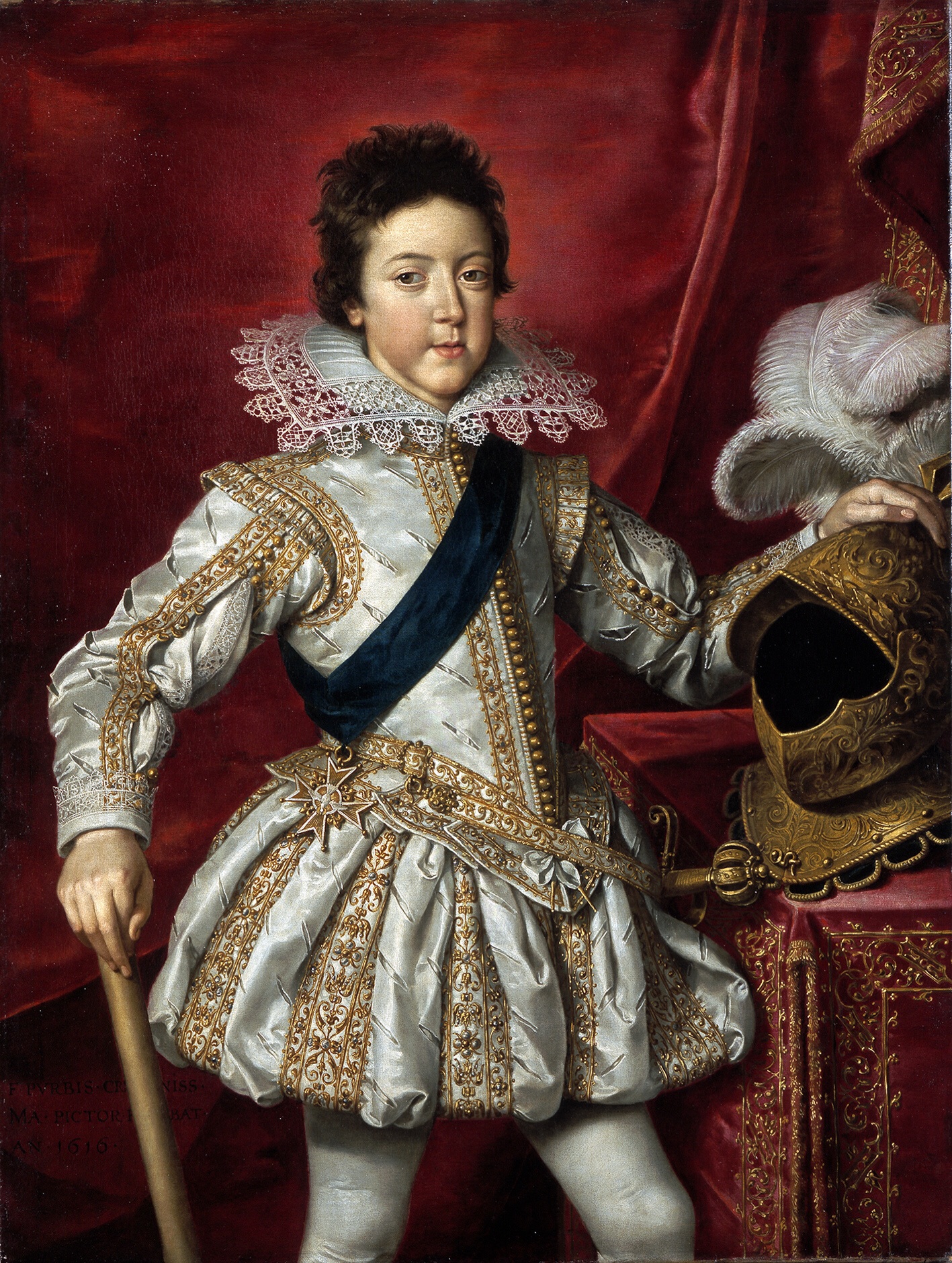|
Charles De Saint-Étienne De La Tour
Charles de Saint-Étienne de La Tour (1593–1666) was a Huguenot French colonist and fur trader who served as Governor of Acadia from 1631–1642 and again from 1653–1657. Early life Charles de Saint-Étienne de La Tour was born in France in 1593 to Huguenot Claude de Saint-Étienne de la Tour and his wife Marie Amador de Salazar, a descendant of Georges de La Trémoille, the Grand Chamberlain of France to King Charles VII of France. In 1610, at the age of 17, Charles arrived at Port-Royal in Acadia with his father in an expedition led by Jean de Biencourt de Poutrincourt who had been one of the original settlers in 1604 at Saint Croix Island, Maine before they moved in 1605 to their permanent settlement at Port-Royal. The habitation had been previously abandoned in 1607 by Biencourt de Poutrincourt and others due to financial troubles. The 1610 expedition also included Poutrincourt's 19-year-old son Charles de Biencourt de Saint-Just and a Catholic priest who set abou ... [...More Info...] [...Related Items...] OR: [Wikipedia] [Google] [Baidu] |
France
France, officially the French Republic, is a country located primarily in Western Europe. Overseas France, Its overseas regions and territories include French Guiana in South America, Saint Pierre and Miquelon in the Atlantic Ocean#North Atlantic, North Atlantic, the French West Indies, and List of islands of France, many islands in Oceania and the Indian Ocean, giving it Exclusive economic zone of France, one of the largest discontiguous exclusive economic zones in the world. Metropolitan France shares borders with Belgium and Luxembourg to the north; Germany to the northeast; Switzerland to the east; Italy and Monaco to the southeast; Andorra and Spain to the south; and a maritime border with the United Kingdom to the northwest. Its metropolitan area extends from the Rhine to the Atlantic Ocean and from the Mediterranean Sea to the English Channel and the North Sea. Its Regions of France, eighteen integral regions—five of which are overseas—span a combined area of and hav ... [...More Info...] [...Related Items...] OR: [Wikipedia] [Google] [Baidu] |
Mi'kmaq People
The Mi'kmaq (also ''Mi'gmaq'', ''Lnu'', ''Mi'kmaw'' or ''Mi'gmaw''; ; , and formerly Micmac) are an Indigenous group of people of the Northeastern Woodlands, native to the areas of Canada's Atlantic Provinces, primarily Nova Scotia, New Brunswick, Prince Edward Island, and Newfoundland, and the Gaspé Peninsula of Quebec as well as Native Americans in the northeastern region of Maine. The traditional national territory of the Mi'kmaq is named Mi'kma'ki (or Mi'gma'gi). There are 66,748 Mi'kmaq people in the region as of 2023 (including 25,182 members in the more recently formed Qalipu First Nation in Newfoundland). According to the Canadian 2021 census, 9,245 people claim to speak Mi'kmaq, an Eastern Algonquian language. Once written in Mi'kmaw hieroglyphic writing, it is now written using most letters of the Latin alphabet. The Mi'kmaq, Maliseet, and Pasamaquoddy nations signed a series of treaties known as the Covenant Chain of Peace and Friendship Treaties with ... [...More Info...] [...Related Items...] OR: [Wikipedia] [Google] [Baidu] |
LaHave, Nova Scotia
LaHave (''La Hève'') is a Canadian community in Lunenburg County, Nova Scotia. The community is located across the river from Riverport and approximately 15 kilometres from the town of Bridgewater. Once the capital of Acadia, it is located on Highway 331 at the mouth of the 97 km long LaHave River. LaHave Islands The LaHave Islands are a small group of islands near shore a few km south of LaHave. Some of the islands are linked by a road to the mainland. The islands are a popular coastal paddling destination. The LaHave Islands Marine Museum (c. 1913), located on Bush Island and accessible by road, is on the Canadian Register of Historic Places. Nearby is Bush Island Provincial Park. History Mi'kmaq Settlement and French colony La Hève was an important centre for the Mi'kmaq people, who traded with Europeans. Messamouet, a well-known ''sakmow'', or Chief, of the Mi'kmaq Nation, is reported to have been from the LaHave area. Samuel de Champlain called there in ... [...More Info...] [...Related Items...] OR: [Wikipedia] [Google] [Baidu] |
New France
New France (, ) was the territory colonized by Kingdom of France, France in North America, beginning with the exploration of the Gulf of Saint Lawrence by Jacques Cartier in 1534 and ending with the cession of New France to Kingdom of Great Britain, Great Britain and History of Spain (1700–1808), Spain in 1763 under the Treaty of Paris (1763), Treaty of Paris. A vast viceroyalty, New France consisted of five colonies at its peak in 1712, each with its own administration: Canada (New France), Canada, the most developed colony, which was divided into the districts of Quebec (around what is now called Quebec City), Trois-Rivières, and Montreal; Hudson Bay; Acadia in the northeast; Terre-Neuve (New France), Terre-Neuve on the island of Newfoundland (island), Newfoundland; and Louisiana (New France), Louisiana. It extended from Newfoundland to the Canadian Prairies and from Hudson Bay to the Gulf of Mexico, including all the Great Lakes of North America. The continent-traversing ... [...More Info...] [...Related Items...] OR: [Wikipedia] [Google] [Baidu] |
Isaac De Razilly
Isaac de Razilly (1587–1635) was a member of the French nobility appointed a knight of the Order of St. John of Jerusalem at the age of 18. He was born at the Château d'Oiseaumelle in the Province of Touraine, France. A member of the French navy, he served for many years during which he played an important role in the French colony of Acadia in New France. He was the son of François de Razilly and Catherine de Villiers, brother of Claude de Razilly and François de Razilly. Brazil Isaac de Razily explored the coast of Brazil in 1612-15 near the island of Marajó, in the attempts to establish France Equinoxiale, with his brother and leader of the expedition François de Razilly. Morocco (1619–1624) Issac de Razilly already sailed to Morocco in 1619, under the orders of Louis XIII who was considering a colonial venture in Morocco. He was able to reconnoiter the coast as far as Mogador. In 1624, he was put in charge of an embassy to the pirate harbour of Salé in Mo ... [...More Info...] [...Related Items...] OR: [Wikipedia] [Google] [Baidu] |
Treaty Of Saint-Germain-en-Laye (1632)
The Treaty of Saint-Germain-en-Laye was signed on March 29, 1632. It returned New France (Quebec, Acadia and Cape Breton Island) to French control after the English had seized it in 1629,"KIRKE, SIR DAVID, adventurer, trader, colonizer, leader of the expedition that captured Quebec in 1629, and later governor of Newfoundland" ''Dictionary of Canadian Biography Online'' after the Anglo-French War (1627–1629) had ended. On 19 July 1629, an English fleet under the command of David Kirke managed to cause the surrender of Quebec by intercepting its supplies, which effectively reduced Samuel de Champlain and his men to starvation.David Dobson, 'Seventeenth Centu ... [...More Info...] [...Related Items...] OR: [Wikipedia] [Google] [Baidu] |
Saint John, New Brunswick
Saint John () is a port#seaport, seaport city located on the Bay of Fundy in the province of New Brunswick, Canada. It is Canada's oldest Municipal corporation, incorporated city, established by royal charter on May 18, 1785, during the reign of George III. The Port of Saint John is Canada's third-largest by tonnage with a cargo base that includes dry and liquid bulk, Breakbulk cargo, break bulk, containers, and cruise. The city has a strong industrial base, including oil refining and manufacturing, matched with finance and tourism sectors and research institutions such as the New Brunswick Museum and the University of New Brunswick. Saint John was the most populous in New Brunswick until the 2016 Canadian census, 2016 census, when it was overtaken by Moncton. It is currently the second-largest city in the province, with a population of 69,895 over an area of . French explorer Samuel de Champlain landed at Saint John Harbour on June 24, 1604, the feast of St. John the Baptist, ... [...More Info...] [...Related Items...] OR: [Wikipedia] [Google] [Baidu] |
Saint John River (Bay Of Fundy)
The Saint John River (; Maliseet-Passamaquoddy: ''Wolastoq'') is a river flowing within the Dawnland region from headwaters in the Notre Dame Mountains near the Maine-Quebec border through western New Brunswick to the northwest shore of the Bay of Fundy. Eastern Canada's longest river, its drainage basin is one of the largest on the east coast at about . This “River of the Good Wave” and its tributary drainage basin formed the territorial countries of the Wolastoqiyik and Passamaquoddy First Nations (named Wolastokuk and Peskotomuhkatik, respectively) prior to European colonization, and it remains a cultural centre of the Wabanaki Confederacy to this day. The Webster–Ashburton Treaty following the Aroostook War established a border between New Brunswick and Maine following of the river, while a tributary forms of the border between Quebec and Maine. Maine communities along the river include Fort Kent, Madawaska, and Van Buren. New Brunswick settlements through ... [...More Info...] [...Related Items...] OR: [Wikipedia] [Google] [Baidu] |
David Kirke
Sir David Kirke ( – ) was an English privateer and colonial administrator who served as the Governor of Newfoundland from 1638 to 1651. He is best known for capturing Québec from the French in 1629 during the Anglo-French War. A favourite of Charles I of England, Kirke's downfall came in 1651 when he was arrested after being accused of withholding taxes collected on behalf of the English government. Kirke was sent back to England, where he reportedly died in prison. Early life Kirke was a son of Gervase (Jarvis) Kirke, a rich merchant of the City of London, and Elizabeth Goudon, a French Huguenot woman. He was raised in Dieppe, in Normandy. Also David was the eldest of five sons, followed by Lewis, Thomas, John and James. While still in England, David married to Sara Kirke. They left for Newfoundland in 1638 and had a number of children, including their sons George, David the Younger, and Phillip. Quebec campaign An English fleet, consisting of six warships and three ... [...More Info...] [...Related Items...] OR: [Wikipedia] [Google] [Baidu] |
Cardinal Richelieu
Armand Jean du Plessis, 1st Duke of Richelieu (9 September 1585 – 4 December 1642), commonly known as Cardinal Richelieu, was a Catholic Church in France, French Catholic prelate and statesman who had an outsized influence in civil and religious affairs. He became known as the Red Eminence (), a term derived from the style of Eminence (style), Eminence applied to Cardinal (Catholic Church), cardinals and their customary red robes. Consecrated a bishop in 1607, Richelieu was appointed Secretary of State for Foreign Affairs (France), Foreign Secretary in 1616. He continued to rise through the hierarchy of both the Catholic Church and the French government, becoming a Cardinal (Catholic Church), cardinal in 1622 and Chief minister of France, chief minister to King Louis XIII, Louis XIII of France in 1624. He retained that office until his death in 1642, when he was succeeded by Cardinal Cardinal Mazarin, Jules Mazarin, whose career the cardinal had fostered. Richelieu became enga ... [...More Info...] [...Related Items...] OR: [Wikipedia] [Google] [Baidu] |
Louis XIII Of France
Louis XIII (; sometimes called the Just; 27 September 1601 – 14 May 1643) was King of France from 1610 until his death in 1643 and King of Navarre (as Louis II) from 1610 to 1620, when the crown of Navarre was merged with the French crown. Shortly before his ninth birthday, Louis became king of France and Navarre after his father Henry IV of France, Henry IV was assassinated. His mother, Marie de' Medici, acted as regent during his minority. Mismanagement of the kingdom and ceaseless political intrigues by Marie and her Italian favourites led the young king to take power in 1617 by exiling his mother and executing her followers, including Concino Concini, the most influential Italian at the French court. Louis XIII, taciturn and suspicious, relied heavily on his chief ministers, first Charles d'Albert, duc de Luynes and then Cardinal Richelieu, to govern the Kingdom of France. The King and the Cardinal are remembered for establishing the ''Académie française'', and ending ... [...More Info...] [...Related Items...] OR: [Wikipedia] [Google] [Baidu] |
Anglo-French War (1627–29)
The Anglo-French Wars (1109–1815) were a series of conflicts between the territories of the Kingdom of England (and its successor state, the United Kingdom) and the Kingdom of France (succeeded by a republic). Their conflicts spanned throughout the Middle Ages to the modern age. Middle Ages High Middle Ages * Anglo-French War (1109–1113) – first conflict between the Capetian dynasty and the House of Normandy post-Norman conquest * Anglo-French War (1116–1119) – conflict over English possession of Normandy * Anglo-French War (1123–1135) – conflict that amalgamated into The Anarchy * Anglo-French War (1158–1189) – first conflict between the Capetian dynasty and the House of Plantagenet * Anglo-French War (1193–1199) – conflict between King Richard the Lionheart and King Philip Augustus * Anglo-French War (1202–1204) – French invasion of Normandy * Anglo-French War (1213–1214) – conflict between King Philip Augustus and King John of England * ... [...More Info...] [...Related Items...] OR: [Wikipedia] [Google] [Baidu] |








